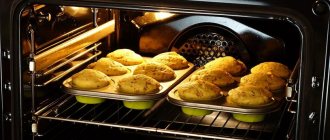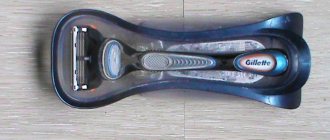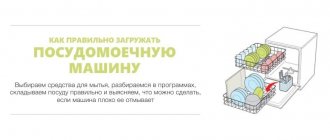A modern electric oven is a rather interesting device; it can do a lot, and can sometimes confuse an inexperienced buyer: why are there so many modes, how do they differ from each other, and, most importantly, are they needed? That’s why we decided to take a closer look at these very modes, to understand the logic of their impact on products, so that anyone who reads this article can firmly decide what they need and what they don’t.
Text: Olga Kuzmina
Tips: Andrey Rydzevsky, Chef Electrolux
Communicate with ovens in the same language
When a housewife gets acquainted with a new oven, the first thing she encounters is the need for translation. And not in the sense from one language to another, but more often from the names inherent in each company to generally accepted terms.
What is it for? It's simple, you can compare one oven with another only when the object of comparison is clear. Therefore, we avoid pretentious, and most importantly, incomprehensible expressions such as “turbo air”, “maxi-grill”, “intense hot air”, “thermal circulation” or “3-0 convection”. And if the description includes some function like “slow baking” or “gratin”, we strive to “shake” the whole truth from the brand department about how it works.
Therefore, the technical characteristics in manufacturers’ catalogs look much brighter and more seductive than our boring, but understandable data. We will not deviate from this rule now, so we assign the same names to the modes that you will see on the following pages of the review.
Don't forget to reheat
At the beginning of the story - some general advice. In the instructions for ovens (which we actively use), for successful cooking, it is recommended to preheat them to the required temperature (we focus on the thermostat indicator lamp; it should go out).
Only for very fatty meat can you make an exception and put it in a cold oven. In this case, the cabinet can be turned off a few minutes before it is ready; the residual temperature will be sufficient for the successful completion of the process. It is advisable to open the door as little as possible, and observe the “behavior” of the products through the glass (this is why the backlight often does not turn off while cooking is in progress).
Selection of cookware
Today there is a huge selection of baking dishes on sale. You don’t need to buy the entire arsenal; it’s enough to know only the bare minimum that you’ll need.
I recommend having in your arsenal a flat baking tray, a deep baking tray for preparing lasagna, casseroles, roasts, cast iron dishes for long-term stewing (duckling or goose pans), ceramic forms for portion serving and a glass dish for baking dishes.
The universal rule when choosing cookware is this: it must withstand heating up to 250 degrees.
Alas, some ceramic molds may not be heat-resistant enough and may crack if there is a strong temperature difference, so if there are no other options, they should be placed in a cold oven.
Mode 1: Bottom + Top Heat
This is a mandatory mode for any electric oven. It has many names: static, traditional, classic heating. Two heating elements below and above are turned on simultaneously. The heat generated by the elements creates the effect of natural convection: a hot flow rises from below, and a cool flow falls from above. But this movement is not as rapid as we would like, the process proceeds slowly, and heat does not always fill the oven chamber evenly. The lower heating element is always more powerful.
Andrey Rydzevsky, chef Electrolux professional
Some foods, particularly pies, are more difficult to bake from the bottom. While browning on top is not a problem. The position of the baking sheet in the oven allows in this case to achieve balance. A good example is pizza. To make it crunchy from below, the baking sheet with the pie is placed on the lower levels, otherwise the dough will not bake and the filling on top may burn.
Conclusion: You can use the guides in the middle of the oven. But, if you want the heat to flow more strongly from above or below, the grille is moved one floor in the desired direction.
We obtained a variety of dishes suitable for cooking in this mode from catalogs and instructions:
- These are savory pastries, muffins, cookies, delicate cakes, sponge cakes, bread;
— Stuffed vegetables;
— Lasagna;
— Roast, pork ribs, lean beef, poultry;
- Fish, fish casseroles.
Additional accessories: parchment paper, foil, baking sleeve
All these means serve to make using the electric oven more comfortable, as well as to maintain a special temperature in the middle of the dish.
Parchment paper prevents the dish from sticking to the baking sheet or pan. Most often used for baking. I recommend using good quality parchment paper with a thin silicone coating. Nothing sticks to such paper and it does not need to be additionally lubricated with fat (vegetable oil or butter).
You can bake meat, fish, poultry in foil or cover baked goods with it so that the delicate dough does not bake too quickly. It should be remembered that food that contains acid (for example, tomatoes, dishes with lemon juice) cannot be cooked in foil.
It is very important to use the foil correctly: place the matte side outward and the shiny side in the middle.
The baking sleeve is used for quickly cooking dishes in their own juices, which makes them very juicy and soft. A constant temperature and humidity are maintained in the middle of the bag - this is very convenient, since you don’t need to stir anything or worry that the dish will burn.
By the way, the baking sleeve can withstand temperatures up to 250 degrees, which means that you can quickly cook chicken, fish or meat for dinner in it.
Mode 2: Bottom Intensive Heat + Top Heat
This is a variation of the traditional mode, here a more powerful lower element is installed than usual. Turn on this mode if you want to quickly fry the dish from below. In addition, it is suitable for forms that do not conduct heat well, such as glass and aluminum vessels.
Andrey Rydzevsky, chef at Electrolux professional:
I prefer this mode for dishes in pots, the so-called Casserole. The presence of liquid will prevent the roast from burning, and the dish will cook faster, since there is good heat from below and from above - as a result, the pot simmers evenly on all sides.
Mode3: bottom heat + top heat + fan
Two heating elements work, but they are also connected to a fan installed on the rear wall. When the turbine rotates, streams of hot air rapidly spread throughout the oven. This creates the same climatic conditions throughout the entire volume, which means a uniform impact on the products. It is preferable to choose a medium level of guides in order to take full advantage of circulation and an even microclimate in the oven.
It is very important that the heating of dishes due to the movement of air masses becomes more intense, the set temperature is reached within a very
In a short time, the food browns faster and on all sides. The speed of the process allows you to preserve the internal juiciness of the dish. In this mode, it is possible, and sometimes necessary, to reduce the usual temperature. In addition, cooking will take much less time; according to some data, the cycle time can be reduced by 30%.
In the vocabulary typical for describing ovens, fan operation can be called convection. This is quite acceptable, although, strictly speaking, in the traditional mode there is also convection. Let's clarify.
Convection is the phenomenon of heat transfer, in our case, in the air. Natural convection occurs when a volume of air is heated unevenly, warmer is lighter, colder is heavier. But the fan creates forced convection, that is, the mixing of flows depends not on temperatures, but on the speed of rotation of the blades. In our magazine, a fan may be called a convector, but the word convection is not used as a name for this mode.
Ovens equipped with a fan (or a ring element with a fan) are called multifunctional. If these devices are not available, the model is static.
This mode is suitable for large dishes that require even cooking inside and out, such as roast rolls, pork trotters, cakes, puddings, casseroles, roasts.
Some manufacturers specify that you can cook on 2 levels at the same time.
Andrey Rydzevsky, chef at Electrolux professional:
Dual heating mode with fan is good for large pieces of meat, fish and whole poultry. This mode is also suitable for large dishes that require even cooking inside and out, such as roast rolls, pork trotters, cakes, puddings, casseroles, roasts.
On the other hand, some dishes, such as meringues and omelettes, do not like convection, so static is preferable for them.
Mode 4: Bottom Heat
The lower heating element is the most “secret” element of the oven; it is not visible, it is hidden behind the bottom of the chamber. Bottom heating is often the main heating element in very simple ovens; in more complex ovens it rather serves as an auxiliary element. It is recommended to use it for drying the bottom of pies with a wet filling, for example, fruit, browning the bottom, and for canning. Bottom heat is also chosen for long-term baking.
The mode has significant disadvantages - longer cooking compared to the two options already described. The housewife is forced to pay more attention to the process itself: unfolding the baking sheet, moving it lower or higher.
Mode 5: Bottom Heat + Fan
The principle of this mode is the same as when the lower element is working, only cooking proceeds more quickly. The heat from below rises to the ceiling, is captured by the currents created by the fan and spreads throughout the oven. This mode is often recommended for baking open-faced pies or quickly finishing bakes when a high bottom temperature is required, for example for low-rising baked goods made from yeast dough. Pros: juicy inside and evenly browned on all sides, especially the bottom. The instructions for the Gorenje oven do not advise using tall pans, so as not to disturb the circulation of heated air over the dish.
Instructions: how to use an electric stove
Due to its small dimensions, the oven will not take up much space in the kitchen. The models have intuitive controls that are understandable even to inexperienced cooks.
To start using an electric stove:
- Turn on the device and select the desired temperature mode.
- Wait 15 minutes for the inside of the oven to heat evenly.
- Place the dish inside and turn on the timer.
- Wait for the beep, check the food is ready and turn off the oven.
Electric models are safe to use, but place a large load on the electrical network. The service life of the devices is limited to 3-5 years, because heating elements quickly fail.
Mode 6: Top Heat
The upper heating element is placed along the perimeter of the oven ceiling; this tube is always visible. In this mode, the element works solo. The heating is not so intense and, in addition, natural convection is difficult. The mode is chosen for frying almost finished dishes on top, for example, cakes, casseroles, browning breading, as well as cooking lightly fried vegetables on the grill. In the instructions for the Ardo device we found the following dishes: dumplings, polenta, rice, lasagna, pasta casseroles, vegetables with bechamel. And Miele has puddings and baked vegetables.
Andrey Rydzevsky, chef at Electrolux professional:
Andrei Rydzevsky chooses this mode for “juliennes, French-style meat and all dishes that require giving them a golden “cap” of cheese and mayonnaise.” We cook only on the upper tier of the guides.
We observe, record and record
The first step to truly getting to know your oven is observing its behavior.
Since in the world, despite mass production and standardization, there are no two 100% identical ovens, we put this advice as the very first. First of all, pay attention to where your oven is located. We're not talking about Feng Shui rules, no! Pay attention to its location relative to other things that can cool it down or cause its temperature to rise more quickly. A draft or draft from an open window or doorway can slightly cool the oven. The closer the stove is to other household appliances or furniture, or maybe simply driven into a corner, the less space there is for cooling it. These are all important things to consider when planning the time to preheat your oven to the desired temperature.
TIP: The best thing to do is to have a notepad with information on it “how long will it take your oven to heat up to the desired temperature.” In the midst of preparations for a festive dinner, for example, such notes will come in handy.
Mode 7: top heat + fan
This is an accelerated “version” of the previous mode 6. The combination of heating and the movement of air masses allows you to achieve a light golden crust on the surface of products with uniform internal heating. Therefore, the mode is chosen for dishes baked in molds: casseroles, soufflés of vegetables, meat, lasagna.
Andrey Rydzevsky, chef at Electrolux professional:
Sometimes the difference between some modes is very speculative, that is, we are not dealing with technical, but rather with marketing categories.
Regarding the use of some modes, I have my own opinion, different from what is usually written in the instructions. It is based on my daily experience. I think housewives will also quickly be able to master the intricacies of their new ovens and adjust their capabilities to suit themselves.
Mode 8: ring heater + fan
A spiral heater is placed on the back wall of the oven, folded into a ring, and inside this ring there is a fan. The circular shape was not chosen by chance; the warm air coming from the element is completely captured by the vortex flows created by the fan. The flows are distributed horizontally and then quickly fill the entire chamber.
It is the horizontal movement of hot air jets in this mode that allows you to cook not one, but several dishes at once, placing them on 2-3 levels of the oven. There is only one condition - the required temperature must be the same for all dishes. The drier air inside the oven and the removal of moisture prevents flavors from changing and flavors from mixing, which can result in different dishes.
The mode combines high speed and efficiency. The benefits of this achievement are especially obvious on the eve of the holidays, when you have to cook a lot.
A simple example: we bake not one, but three cake layers at one time. Some of the difficulties faced by cooks disappear; now there is no need to worry that the pie dough will overheat while the first batch is “sitting” in the oven, or that the dish baked first will hopelessly cool down while we are working on the next one.
In addition, housewives are practical people, and sometimes they simply refuse a menu with a few goodies from the oven, and with this mode the problem becomes irrelevant.
Comment from the Indesit Company press service: “This heating does not cause the dish to burn on either side; its advantages are that it is possible to maintain a low temperature, for example, for defrosting or for raising yeast dough. The mode is gentle, since infrared rays do not affect the dish.”
The operation of a ring heater with a fan is suitable for puff pastry, drying herbs, mushrooms, fruits, sterilizing home canned food and all dishes that should be soft and juicy inside and at the same time well baked.
If food is being cooked on one level, then, according to Electrolux, it is wiser to use the lower guides so that the food is better visible. It is also recommended to use one level in the instructions for the Gorenje oven for juicy pastries and fruit pies. When cooking on 2 tiers, it is better to occupy the 1st and 3rd (Zanussi). As already mentioned, several baking sheets are placed in the oven at once, so it is not recommended to occupy the upper level. The instructions for Neff and Bosch ovens indicate that pies and pizza can be baked on two levels, but flat cookies and puff pastries are better on three.
The operation of the fan increases the intensity of the impact on the products, that is, the operating temperature of the mode should be lower. It is important that you do not need to preheat the oven, although there are exceptions. An example from Miele's instructions is frying roast beef or baking dark types of bread, while Gorenje's is any pastry. Cooking speeds up - baking takes less time. In addition, the dishes are subjected to uniform temperature treatment.
In our publication, this mode is usually called convection.
Mode 9: ring heater + fan + bottom heating
| EXAMPLES OF NAMES | APPLICATION |
| Pizza | Electrolux, Hotpoint-Ariston, Zanussi, Neff |
| Pizza mode/stage | Siemens, Bosch |
| Pizza/baking | Kuppersbusch |
| Bottom heating + ventilation heating | Gorenje |
| Gourmet | AEG |
| Defrosting and reheating | De'Longhi |
| Convection heating + bottom heating | Whirlpool |
| Super fast heating | Gaggenau |
| Intensive baking | Miele |
This is a combined mode that takes advantage of convection, that is, uniform and intense heat, and heating from below. But unlike the first one, only one oven level is involved here, the middle one is best. According to the recommendations of the companies, in this mode you can cook unfrozen semi-finished products, French fries, strudel (from the Neff instructions). Moreover, preheating is not necessary.
European oven manufacturers in this mode saw analogies with an oven, where heat comes from all sides, but especially from below. Such conditions turned out to be ideal for preparing pizza - an open-faced pie, which is very easy to buy in a store as a semi-finished product or to make yourself. The pizza must have well-baked and browned dough - the basis of the dish, but the filling must be warmed up, but not lose its juiciness.
In addition to pizza, the mode is selected for baked potatoes, fruit pies, cheesecake, Kirsch Laurent, pies with glaze, cheesecakes, and buns.
Several other areas of application are reheating, keeping dishes hot, defrosting.
Comment from the Indesit Company press service: “This mode is optimal for fruit pie: when we bake a fruit pie with shortcrust pastry, we need, on the one hand, that the dough is not sticky and baked well, for this we use bottom heating, but, on the other hand, the filling, i.e. the top layer should be baked, but not burnt; for this, a ring heater and a fan work.”
Safety requirements
Using an electric oven is not difficult, but it is important not to neglect safety.
Observe the following rules:
- do not use the oven without grounding;
- do not leave operating equipment unattended;
- do not cook in containers that are not intended for high temperatures;
- do not keep flammable objects and liquids nearby;
- Only process and wash the oven when it is de-energized.
Check the oven's power cord periodically. If there are wiring problems or malfunctions, do not use the device until the problem is resolved.
Mode 10: ring heater + fan + bottom + top heating
| EXAMPLES OF NAMES | APPLICATION E |
| Preheat | Siemens |
| Intensive mode | Miele |
| Pro-hot air | AEG |
| Multifunctional cooking | Franke |
| 3D cooking | Beko |
| Quick cooking | Hotpoint-Ariston |
This feature is not common, as you can see, almost all oven heaters are used here, why is this done?
Firstly, this is a very fast achievement of the desired temperature, so the mode is sometimes used to preheat the oven before placing a dish prepared for baking into it.
Secondly, it is also quick to prepare. Convection is enhanced by additional heat flows and optimal temperature distribution. The function is selected for dishes that require deep baking to form a golden brown crust.
Sometimes heaters are not used to their full potential, for example, the upper and lower heating elements use their power partially. In other cases, on the contrary, all elements work to the maximum.
Comment from the Indesit Company press service: “This mode is intended for large dishes (leg of lamb, suckling pig), which take up a lot of space in the cabinet itself, or, for example, several baking sheets of pies, which also fill most of the space, then the temperature distribution occurs evenly over at all levels."
Timer
This is a very important and necessary function for your oven! Therefore, take your time and figure out all these clocks and numbers.
What can a timer do? Not only show the current time.
- You can use the timer like a regular household one . It works independently of the oven. The timer emits a characteristic sound, letting you know that the set cooking time or time on the timer has expired.
- You can set the cooking time in the oven . When the cooking time has expired, the oven switches off automatically. At this time, you may not even be at home; the timer will turn everything off.
- You can delay the start of cooking by specifying the time at which the dish should be ready. The oven will automatically turn on and the dish will be ready at the specified time. Products can be placed in the cooking chamber, for example, in the morning, so that the dish is ready in the afternoon.
Special Modes
| PECULIARITIES | OPERATING ELEMENTS | EXAMPLES |
| For raising yeast dough, making yogurt. | Bottom heating, 40°C 38°C 35°C. | Hotpoint-Ariston, Gaggenau, Whirlpool |
| Defrosting (40°C). | Fan + ring heating. | Hotpoint-Ariston |
| Also - heating in a warm air environment. Defrosting (30°C). Heating 40-100°C. | Fan + ring heater + bottom heating. | Only De'Longhi |
| Temperature 80°C. Fast heating (90°C). | Bottom + top heating. | Electrolux, Hotpoint-Ariston |
| Keeps the finished dish hot, temperature 66-100°C. | Bottom + top heating. | Bosch, Siemens, Candy, Hotpoint-Ariston, Whirlpool |
| For professional serving of food, temperature 30-65°C. | Bottom + top heating. | Bosch, Siemens |
Grill
The grill is a tube-shaped element that is attached to the ceiling of the oven. It differs from a simple heating element, including the top one, in the specificity of its impact - using infrared radiation. It heats not the air, but the food itself. The grill radiation acts strictly under the element, that is, placing sausages or chicken legs slightly to the side will make it difficult to achieve the desired result.
The grill can be used as the main cooking mode, as well as at the final stage, when you want to appetizingly brown the dish.
Manufacturers are unanimous in the name of this mode; only the Hotpoint-Ariston company calls it barbecue, and Gorenje calls it infraheating.
Grills come in several varieties.
The usual one is U-shaped or in the form of a zigzag, the sphere of its “interest” is the entire area of the lattice. Some models use a more economical option - a grill with two circuits, small inside (for example, the so-called middle part of Neff) and large along the perimeter of the ceiling.
The small circuit is included if the portions are small, for example, 4 pieces of toast or several thin pieces of meat. And big and small together in the case when the products are spread out over the entire grill. Grills can differ not only in area, but also in power, so it’s easy to choose softer or, on the contrary, stronger grilling.
Grills can operate exclusively at maximum (meaning their own temperature limit, for example, 250 ° C for Ardo, 200 ° C for Kaiser, or 180 ° C and 220 ° C for Neff), but often manufacturers produce ovens with variable power elements to adjust the intensity frying, say, Whirlpool has 5 power levels, or an oven with a choice of operating temperatures.
The oven is preheated for 3 or 5 minutes, as recommended in the instructions from Gorenje and Ardo; Neff experts suggest preheating it for 10 minutes, but only for frying toast. The cooking level is upper or one level lower, depending on the thickness of the pieces of meat. Frying is most often done on a grate, and to prevent fat from burning and dirtying the bottom, a tray is placed on the lower level; water can be added to it to avoid smoke and fumes.
Examples of using the grill: steaks, sausages, bacon, frankfurters, kupaty, chops, liver, rolls, hearts, fish fillets, vegetables, toast, as well as dishes in small or large ramekins.
Comment from the Indesit Company press service: “The crispiness is ensured by infrared radiation, which is applied directly to the top layer, i.e. on the crust. The upper heater operates at maximum, the moisture quickly evaporates - this provides a “crunch”, and the surface burns, which gives the golden color of the finished dish. When using heating elements, the impact occurs indirectly
onto the surface, and first the air is heated, and then the dish itself. Accordingly, the effect is no longer the same"
Mode 11: grill + top heat
| EXAMPLES OF NAMES | APPLICATION |
| Large grill | AEG, Electrolux, Zanussi, Hansa |
To enhance the effect on food, the grill’s operation is sometimes “supplemented” with heat coming from the upper heating element. In this mode, you don’t have to figure out how many servings can be ready. The mode is designed for cooking food spread over the entire area of the grill.
How long does it take to bake a cake?
Such tables can also be useful if in the recipe we find only general phrases - “ bake”
until ready”, “bake until golden brown” “
bake
in the oven”, etc. ... Baking time tables for dough products
| Product | Temperature, °C | Baking time , min |
| Meringues | 110-120 | 25-30 |
| Meringue | 90-100 | 30-40 |
| Pies | 160-180 | 30-40 |
Mode 12: grill + fan
| EXAMPLES OF NAMES | APPLICATION |
| Fan+grill | Smeq |
| Gratin | Hotpoint-Ariston |
| Grill with fan | De'Lonqhi |
| Ventilated grilling | Franke |
| Fan grill | Miele, Candy, Kaiser, Mora |
| Ventilated grill | Indesit |
| Grill with convection | Bosch |
| Grill with forced convection | Ardo |
| Top heater + fan | Beko |
| Turbo grill | Electrolux, Zanussi, Gefest, Whirlpool, Cata |
| Turbo maxi grill | Teka |
| Infraheating + fan | Gorenje |
| Infro-fry | AEG |
| Thermogrill | Neff |
The grill has a limited frying area; this disadvantage is especially noticeable when you have to cook complex-shaped products, for example, goose or pig. And I really want the dish to have a wonderful crust on all sides.
The way out of this situation is obvious - a spit. We put it on, periodically (using a motor or manually) turn it and achieve the desired effect. But there is a much simpler way - add a fan to the grill. It distributes the radiation, frying food not only from above, but also from below and from the sides.
It turns out something like a spit, only it is not the product that moves, but the air. At the same time, all the advantages of grilling are preserved - crispy crust, appetizing aroma and juicy flesh. The dish will not dry out and will be ready much faster.
All dishes that are cooked on a regular grill (except steaks and toast) are suitable for this mode, and rolls and poultry are best.











